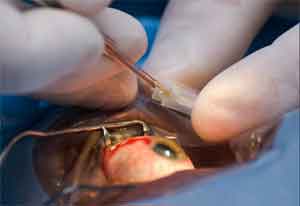- Home
- Editorial
- News
- Practice Guidelines
- Anesthesiology Guidelines
- Cancer Guidelines
- Cardiac Sciences Guidelines
- Critical Care Guidelines
- Dentistry Guidelines
- Dermatology Guidelines
- Diabetes and Endo Guidelines
- Diagnostics Guidelines
- ENT Guidelines
- Featured Practice Guidelines
- Gastroenterology Guidelines
- Geriatrics Guidelines
- Medicine Guidelines
- Nephrology Guidelines
- Neurosciences Guidelines
- Obs and Gynae Guidelines
- Ophthalmology Guidelines
- Orthopaedics Guidelines
- Paediatrics Guidelines
- Psychiatry Guidelines
- Pulmonology Guidelines
- Radiology Guidelines
- Surgery Guidelines
- Urology Guidelines
Combined Cataract Surgery Ups Postop Endophthalmitis Risk

A higher incidence of acute postoperative endophthalmitis(POE) was found in patients who undergo combined cataract surgery, or removal of cataracts combined with treatment of other eye disorders during the same procedure compared with those who have cataract surgery alone, according to a cohort study published in the British Journal of Opthalmology.
Combined surgery as a whole carried a 38% higher risk for acute POE than standalone surgery. The study also suggests that the incidence of acute POE after combined surgery may depend on the type of procedure performed, with higher rates linked to vitreoretinal procedures.
Endophthalmitis is inflammation of the intraocular fluids (vitreous and aqueous) usually due to infection. Acute Postoperative Endophthalmitis refers to infectious endophthalmitis shortly after ocular surgery which is mostly present within 1-2 weeks, usually 3-5 days after the surgery. Initial symptoms include rapid progression of pain, red eye, ocular discharge, and blurring.
Catherine P Creuzot-Garcher and his associates conducted a study to assess the incidence of acute postoperative endophthalmitis (POE) after cataract surgery combined with corneal, glaucoma or vitreoretinal surgical procedures.
The study included 6 260 477 eyes which underwent phacoemulsification cataract surgery as a single procedure and 115 468 eyes which underwent phacoemulsification combined with corneal, glaucoma or vitreoretinal surgical procedures.
The study found that the crude incidence of acute POE after stand-alone or combined cataract surgery was 0.102% and 0.149%, respectively. The analysis also showed that combined surgery taken as a whole was at higher risk than cataract stand-alone surgery. However, glaucoma surgeries were associated with a lower acute POE incidence compared with phacoemulsification, conversely to vitreoretinal surgical procedures.
Read Also: Generalized seizures during cataract surgery following peribulbar block: A case report
The study concluded that there was an increased occurrence of acute POE after combined cataract surgery than after cataract surgery done as a stand-alone procedure. Further, the incidence of acute POE after combined surgery was related to the type of surgery performed simultaneously with cataract extraction.
For more reference log on to http://dx.doi.org/10.1136/bjophthalmol-2018-312171

Disclaimer: This site is primarily intended for healthcare professionals. Any content/information on this website does not replace the advice of medical and/or health professionals and should not be construed as medical/diagnostic advice/endorsement or prescription. Use of this site is subject to our terms of use, privacy policy, advertisement policy. © 2020 Minerva Medical Treatment Pvt Ltd